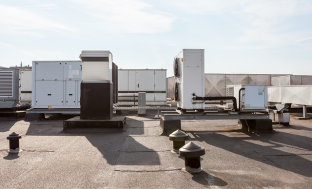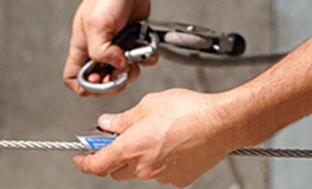latest news
Work at Height _ Correct Equipment Selection Part Three
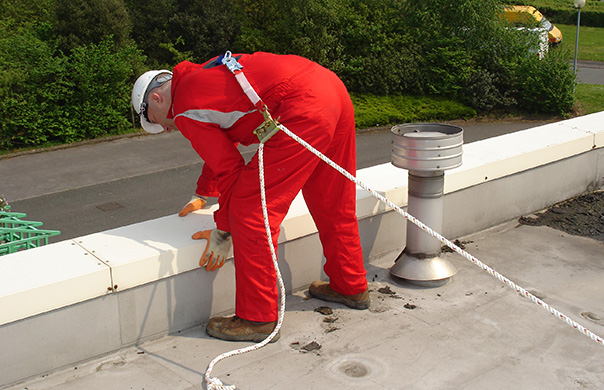
By Mark Dolan, General Manager, Roof Edge Fabrications
So far in this current Blog series on Equipment Selection, I’ve provided an overview of the Hierarchy of Control and how this can help you make an informed decision when it comes to work at height, as well as the different types of Collective Equipment such as edge protection, MEWPs, Scaffolding and Rooflight Protection.
In this, the final part of the series, I will be looking at the last part of the Hierarchy of Control – Fall Protection, in particular the difference between fall restraint and fall arrest.
What is Fall Protection?
As previously explained, the priority should always be to eliminate the risk of a fall, but when this is not possible and Collective Measures are not suitable, then you can consider fall protection – but only as a last resort.
Fall protection systems can be either fall arrest or fall restraint and understanding the difference between the two is critical as they provide very different forms of protection.
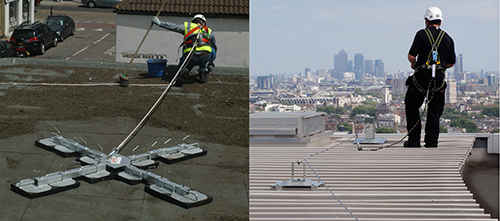
What is Fall Restraint?
A fall restraint system allows a worker to work near to a hazard but prevents them from actually reaching an area where a fall could occur. For example, maintaining gutters on a roof or working beside a fragile rooflight.
In these cases a fall restraint system consisting of a fixed length lanyard attached to an anchorage point allows work to be carried out in a specific area, but not beyond it.
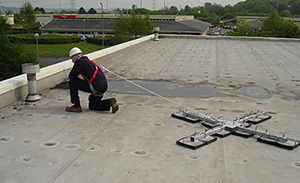
It is recommended that systems designed to restrain a fall are positioned at least 2.5m from the leading edge or hazard. This would allow the worker to be connected to the system with a 2m lanyard and work safely in restraint ½ m from the fall risk.
Although the system is being used as fall restraint, it should be tested to current fall arrest loads to ensure that the user is protected in the event that the systems is used incorrectly, for example the lanyard is too long.
What is Fall Arrest?
As the name suggests, fall arrest systems are designed to arrest a fall and prevent a person from reaching the ground. These systems allow workers to move freely around a roof or area where there is a fall potential and generally comprise an anchor point, lanyard and a fully body harness. In the event of a fall, the system arrests the force and decelerates the worker over a specific distance.
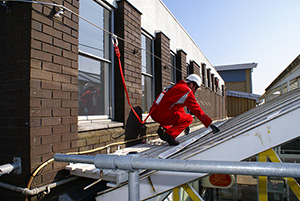
Fall arrest systems provide individual protection and are reliant on correct usage so these systems must only be used as a last resort and by workers who are competent to use them. Users must be fully aware of the dangers of working at height and be given sufficient information, instruction and training. This should include practical training such as how to wear, inspect and adjust a harness, how to check that the attachment points on a harness are closed properly and how to recognise any potential defects in the system.
Accidents Happen
No matter how careful you plan something, you can’t guarantee an accident won’t happen. When using fall arrest, it is a legal requirement to have a comprehensive rescue plan and policy in place in the event that someone falls. For fall restraint systems, you need to consider how you will evacuate a worker from height if they are injured or become ill.
Careful Equipment Selection
Work at height is high risk so it is essential that you ensure that all tasks are risk assessed, planned thoroughly and that those carrying out the work are trained in the correct use of safety systems.
Correct equipment selection is crucial. Hopefully through this series I have given you an idea of how easy it is to prevent falls from height by following the hierarchy of control, but if you do have any questions, please contact us.

